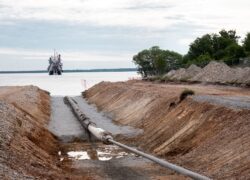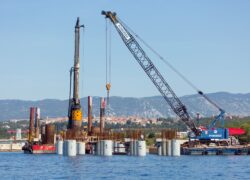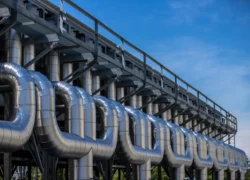In 2024, Estonia, one of the world’s leaders in digitalisation, announced the next stage in the development of its public administration. The concept of a ‘personal state’ (Est. personale riik) is intended to elevate the relationship between citizens and the administration to a new level. The state aims not only to respond to citizens’ needs, but also to anticipate them by offering personalised services in advance. The implementation of this concept can set new standards in the global approach to the digitisation of public services. However, it also raises social concerns about the protection of privacy and the preservation of citizens’ autonomy in an increasingly digital world.
A personal state. In 2024, the Estonian government announced the next stage of the digital transformation of the state by introducing the concept of a ‘personal state’. This idea represents the next step in the long-term process of digitalisation, which the Ministry of Economic Affairs and Communications divided into three stages in the publication “Personaalne riik”[1]:
– 2000-2010: e-state (e-Riik) – In this phase, basic digital services were implemented that improved the functioning of the public sector. However, they essentially reflected the mechanisms and logic of their traditional, non-digital counterparts.
– 2010-2020: digital state (digiriik) – This phase was characterised by the proliferation of digital services and the emergence of a data-driven society. Digital services began to outperform their non-digital counterparts in terms of efficiency.
– 2020-…: personal state (personaalne riik) – This stage involves the creation of new types of services for which there are no non-digital counterparts. The aim is to create personalised services through the use of data and machine learning.
The main premise of the latest concept is that public administrations should be proactive. Instead of waiting for a citizen to ask for a specific service, the authorities should anticipate needs and offer appropriate support or information. The new concept is based on the idea that the state, which has access to the citizen’s data, can operate in the background, providing personalised services and assistance in administrative matters, taking into account the citizen’s individual needs. The system designed in this way is intended to provide digital public services that have five characteristics: a focus on citizens’ needs, widespread availability, proactivity, credibility and transparency, and the creation of added value for society.
This is not a utopian vision – Estonia, based on the solid foundations laid in previous stages of digital development, is ready, as the authors of the new concept point out, for another breakthrough step, striving to become a world leader in creating a personalised state.
The plan to implement the concept of a ‘personal state’ in Estonia includes several key stages. The first step is to develop a public service maturity model based on the characteristics of ‘personal state’ services and to integrate these characteristics into the Estonian “Digital Society Development Strategy 2030” (Digiühiskonna arengukava 2030) by the end of 2024. In parallel, work will be carried out to identify the legal possibilities and constraints for the implementation of this concept. The next stage will see the development of at least 10 services related to life events for citizens and 10 services for entrepreneurs, as well as the development of interoperable central service channels by the end of 2025. The concept of the ‘personal state’ is likely to be largely decentralised, as has been the case in Estonia so far, but some tasks may be carried out within the newly established Ministry of Justice and Digital Affairs in Kristen Michal’s government, headed by Liisa-Ly Pakosta. It is worth noting that the author of the ‘personal state’ concept is the liberal and innovative Estonia 200 party, of which Pakosta is a member.
e-Estonia. Estonia has established a strong position in the field of digitalisation thanks to the consistent strategy of building a knowledge-based society, adopted shortly after regaining independence. The key to this success was the favourable geopolitical conditions following the collapse of the Soviet Union, which facilitated the creation of a new system based on information and communication technologies. Experienced scientists from the Soviet period played an important role in the creation of this system and made a significant contribution to the development of the ICT sector. In addition, the geographical proximity to the Nordic countries led Estonian ICT specialists to initiate a number of joint projects with telecommunications companies from Sweden and Finland. As a result, during the 1990s, the Nordic countries had a significant influence on the development of digital policy in Estonia, both in normative and practical terms. At the same time, however, Estonia adopted an innovative approach, focusing on building unique systems from scratch rather than modifying existing solutions. Effective management was based on decentralised digital policy and a strong public-private partnership. The bold and far-sighted plans made at the time led to Estonia’s current position – and, just as importantly, recognisable brand – as an innovative country where digital technology drives socio-economic development. This is also reflected in its high rankings in digital public services – second out of 35 European countries according to the eGovernment Benchmark 2023 and second out of 193 UN countries according to the UN E-Government Survey 2024. The latter ranking, published in September 2024, stated that “Estonia continues to strengthen its global leadership in digital government through solid infrastructure and forward-looking initiatives. […] Estonia has developed a comprehensive digital identity system that enables seamless access to online public services. With a focus on data-driven governance, Estonia is also a pioneer in the integration of artificial intelligence, cybersecurity, and next-generation technologies such as 5G. Estonia’s national strategy is closely aligned with the Sustainable Development Goals (SDGs) and the European Union’s digital strategy, supporting international cooperation and innovation in the delivery of public services.”
Conclusions
– The concept of a ‘personal state’ opens up new possibilities for improving the quality and efficiency of public services. In simple terms, this means that the system will be able to automatically inform citizens about mundane but important matters. For example, it could remind people when documents are due to expire, provide parents with information on the education options available for their children, or inform senior citizens about the benefits to which they are entitled. Furthermore, this concept lays the groundwork for a ‘digital welfare state’, where advanced data analytics and artificial intelligence enable more complex, proactive actions by public administrations. In practice, the system could provide information on available support programmes, such as courses to improve professional skills, tailored to the individual situation and needs of the citizen and taking into account forecasts of the development of the local labour market.
– This approach is based on the concept of ‘choice architecture’ developed by Nobel laureate Richard Thaler. It involves creating conditions that make it easier for citizens to make beneficial choices without restricting their freedom of choice. This is achieved through ‘nudges’, i.e. suggestions from the system that can encourage behaviour deemed desirable from the point of view of society and the individual. For example, the system could suggest optimal pension saving strategies adapted to the individual’s financial situation.
As a pioneer in the digitalisation of public services, Estonia is setting trends in this area (“Komentarze IEŚ”, No. 282). Its experience in implementing the concept of the ‘personal state’ can inspire other countries to adopt similar solutions. Estonia’s success in this area can therefore be an important point of reference in the global discussion on the future of digital public administration.
– At the same time, the personal state concept can be an effective remedy for Estonia’s current economic challenges (“IEŚ Commentaries Brief”, No. 1172). By acting proactively and personalising services, the public administration can both reduce the state’s administrative costs and more effectively support economic development and the competitiveness of the Estonian economy.
– However, the implementation of this approach presents considerable challenges. The debate in the Estonian media surrounding this topic reveals concerns mainly related to the potential violation of citizens’ privacy and excessive state interference in private lives. Among other things, representatives of some non-governmental organisations and the scientific community in Estonia point to the restriction of individual autonomy due to excessive anticipation of needs by the system. They also emphasise the need for deeper reflection on the ethical aspects of the concept of the ‘personal state’. Moreover, they underline the risks associated with the collection and use of large amounts of personal data, which could lead to abuse or information leakage.
– The coalition partners of Estonia 200 – the Reform Party and the Social Democrats – have also expressed some concerns about the proposed concept, pointing to the high costs of modernising the IT system, which may be incomprehensible to citizens in the country’s difficult economic situation.
[1] https://www.mkm.ee/sites/default/files/documents/2024-02/PersonaalneRiik-MKM_05.02.2024.pdf










